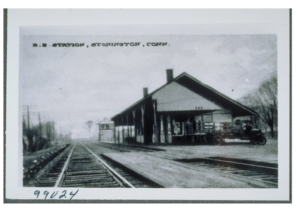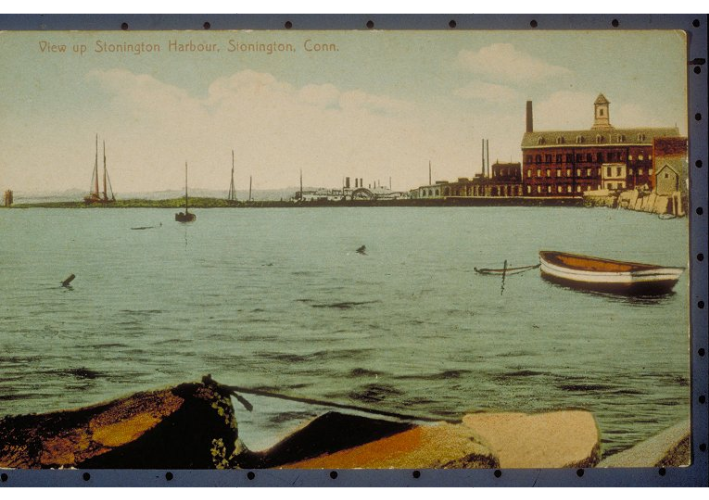By Edward T. Howe
The borough of Stonington is the oldest continuous borough in Connecticut. It is located in the Town of Stonington in the extreme southeastern part of the state, on a peninsula with an area of less than one square mile extending into Long Island Sound.

Captain Nathaniel B. Palmer
Settled in 1752 in an area known as “Long Point,” the future borough became a fishing, shipbuilding, whaling, and sealing center. As the inhabitants prospered, they realized that their collective needs diverged from the rest of the town. They petitioned and were granted the right to form an incorporated borough by a special act of the Connecticut General Assembly in May 1801. Stonington then became the second borough chartered in the state (preceded by Bridgeport in October 1800).
Since the borough was now subordinate to the town government, its residents had to pay both borough and town taxes. The town taxes were for services not provided by the borough (e.g., education). In June of 1801, in accordance with the act, they elected a warden, six burgesses, a clerk, treasurer, and bailiff. The warden and burgesses constituted the legislative body. Among the initial powers granted, the corporate body had the right to sue and be sued; purchase, hold, and convey real and personal property; levy taxes; lay out highways; and make by-laws (e.g., pertaining to injury from fire, wharves and other maritime property, walks, trees, animals, buildings, and nuisances).
Stonington Repels Attacks
In August 1814, during the War of 1812, the borough repelled its second British naval attack. (The first occurred in August 1775 shortly after the start of the Revolutionary War.) Six years later, in 1820, Stonington resident Captain Nathaniel Palmer, on a voyage seeking seals, reached Antarctica, becoming the first American to achieve this feat. Previously, Edmund Fanning, another seal trader from Stonington, had discovered three Pacific islands on a 1797-1798 voyage.

Railroad Station, Stonington, ca 1900-1919. – Leroy Roberts Railroad Collection, Archives & Special Collections at the Thomas J. Dodd Research Center, University of Connecticut Libraries
The borough gained access to two major forms of transportation in 1837 with the completion of the Providence and Stonington Railroad (the Stonington Line) and the steamship service provided by the Boston and New York Transportation Company, both of which later helped Stonington expand its manufacturing base. Manufacturing in the borough centered on two factories. John F. Trumbull opened a horseshoe nail operation in 1851. Over time several succeeding businesses used the factory, but it eventually burned down in 2003. The other major firm, the American Velvet Company, begun in the early 1890s, remained in business until 1998.
The self-contained borough underwent a major change in the 20th century. Although still home to the state’s only commercial fishing fleet, the borough significantly declined as a seaport. Shedding its industrial past, it became increasingly a summer residence and tourist destination. Amid its eclectic mix of cottages and expensive homes, its picturesque setting currently has a harpsichord factory, a pottery maker, antique businesses, shops, restaurants, and the re-purposed velvet mill that includes entrepreneurs, arts and crafts stores, and health services.
Edward T. Howe, Ph.D., is a Professor of Economics, Emeritus, at Siena College near Albany, New York.









